Chinese cuisine, formally known as zhōng guó bā dà cài xì. varies with different regions in terms of style and taste according to each region’s location, cultural change as well availability of resources. Although in Southern China (warm and wetter regions), rice is considered to be the staple food whereas in Northern China Dry and cold regions) dumplings and noodles are the main dishes that are commonly served. There are different types of Chinese cuisine and each dishes have different styles of cooking method used in China, and each of these methods are usually identified according to 8 culinary traditional Chinese food in China. In today’s post, we will talk about the different types of Chinese food and how each is prepared.
Types Of Chinese Food
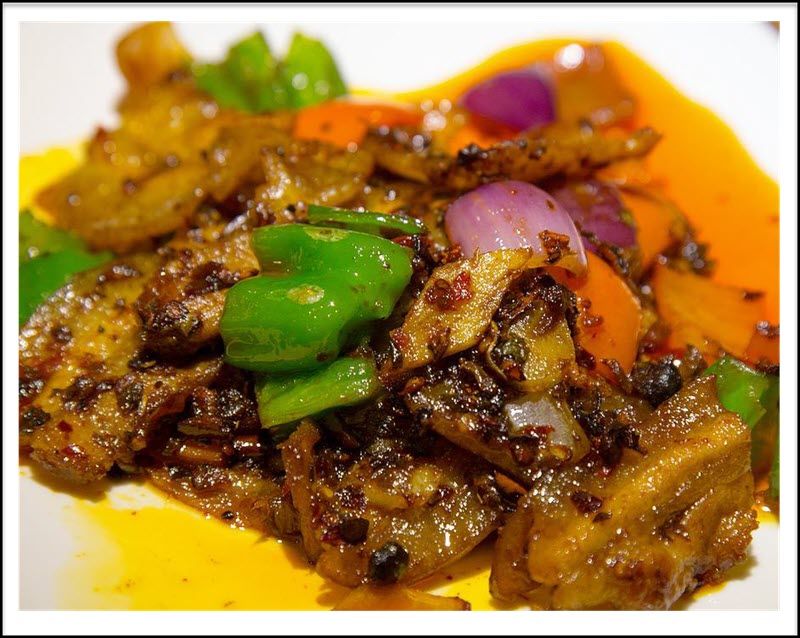
Sichuan cuisine
- Chinese name: Chuan Cai
- English name: Szechuan Cuisine, Chuan Cuisine
- Flavor: Hot and spicy, fish flavor, sour and spicy
Sichuan Cuisine or also called as ChuanCai in Chinese. It is also known as Szechuan or Szechuanese. The food in Sichuan is an origin from Sichuan Province located in Southwestern China.
Sichuan Cuisine is properly known for its use of big and bold flavors, hence spicy and bold. It uses numerous amounts of chilies and it commonly used seasoning are Sichuan peppers, ginger, garlic, shallots, star anise and peanuts to help enhance its flavors. The food of Sichuan cuisine usually contains foods that are preserved through the process of salting, drying and pickling.
The food in Sichuan is known having a spicy and hot flavor, though there are sweet and sour flavors on other dishes as well.
If you are wondering that causes the numbing sensation felt when consuming the dish, it is because of the adding peppercorns to the dish.
The most famous dishes in Sichuan are:
Mapo Tofu
Mapo Tofu or popularly known as “Pockmarked of old woman’s bean curd” is a bean curd that is usually consists of tofu in a chili and bean sauce. The sauce is usually an oily bright red suspension. The dish is usually topped with minced meat that can either be beef or pork.
Seasonings used in Map Tofu includes onions, water chestnuts and vegetables.
Although this dish is a Sichuan food, you can also find this dish not just within China but can also be found outside China as well.
Kung Pao Chicken
Kung Pao Chicken is a delicious dish that is usually prepared by simply frying the chicken that was cut in diced then drying it using red pepper and peanuts. Since Mapo Tofu is a numbing spicy dish, Kung Pao Chicken is the opposite wherein it is less spicy and most often not spicy at all.
Fuqi Fei Pian
Fuqi Fei Pian is a Sichuan appetizer that is made from thinly sliced beef (usually heart and tongue) mixed with spicy and numbing sauce. The sauce is made from Sichuan peppercorns, chili oi, sesame, vinegar, chili oil and sugar to taste. Spices includes cilantro, celery, and peanuts.

Cantonese Cuisine
- Chinese name: Yuè Cài
- English name: Cantonese cuisine, Yue Cuisine, Guandong Cuisine
- Flavor: Fresh milk, sweet and natural
Cantonese Cuisine or Yue Cuisine originating from Guangdong province, located in Southeast China. Since Guangdong Province is near South China sea, there is abundant supply of foods and even seafoods.
In Yue cuisine, all meats are being used in their dishes as well as duck’s tongue, snails, snakes and even Chicken feet. But, since lamb and goat is scarce in the region it is seldom eaten or added to Cantonese dishes.
There are different cooking techniques used in Cantonese cuisine and that includes steaming and stir fried or Wok Hei, the two methods are used to preserve the flavor and taste of the dish.
Spices used in Cantonese cuisine includes chives, star anise, black pepper, coriander leaves, and ginger though most of the time little spices are rarely used or used in moderate amounts.
Most of Cantonese foods are usually eaten as desserts, or as a snack food and sometimes eaten during breakfast.
Aside from Dim Sum dishes, some of the popular Cantonese dishes are listed below:
Deep Fried Dishes
Deep fried dishes is not a common dish in Cantonese cuisine but there are still a wide variety of deep fried dishes served the region such as Youtiao (strip of dough that is deep fried) and Zhaliang (fried two-wrapping the dish with rice sheet on a deep fried dough stick).
Noodle Dishes
The most common noodle dish in Cantonese cuisine is the Shahe Noodles. A rice noodle that is chewy and elastic. It is a popular dish in Guangdong, Hainan and Guangxi.
Meat Dishes
The meat dishes in Cantonese cuisines are usually made by boiling the chicken in water or using chicken broth. The Chicken was first marinated with salt before boiling.
Chinese Steamed Egg
A dish made from beating the eggs to achieve its creamy consistency. It is then steamed after the beating process. Although the taste and flavor varies when adding ingredients such as soy sauce and spring onions.
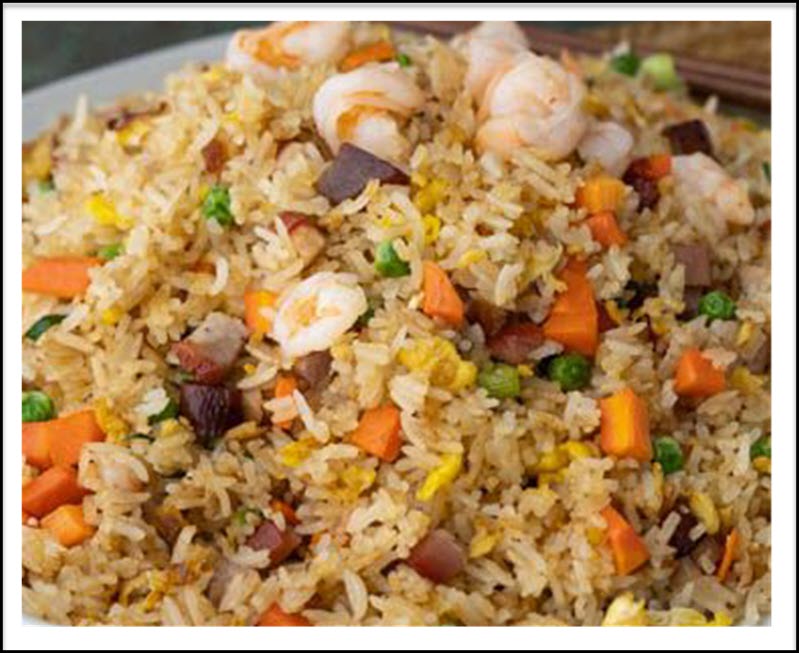
Jiangsu Cuisine
- Chinese name: sū cài
- English name: Jiangsu cuisine, Su cuisine
- Flavors: natural, sweet, milk and umami
Jiangsu Cuisine or also called Su Cai Cuisine in Chinese is one of the eight great Chinese Cuisine. The cuisine is derived from the cooking methods in the province of Jiangsu (Coastal East of China).
There are 6 different cooking style of Jiangsu cuisine and that includes Yangzhou, Nanjing, Suzhou, Huaiyang, Xuzhou and Haizhou. The Chinese food in Jiangsu cuisine is characterized as slightly soft, while the meat are usually tender. The taste are usually sweet and mild salty.
Rice and Wheat products are Jiangsu staple foods.
The popular dishes in Jiangsu Cuisine are:
- Mandarin Fish with Sweet and sour sauce
- Braised Meatballs (Red braised meatballs or hóng shāo shī zì tóu
- Yangzhou fried rice
- Stewed Tortoise
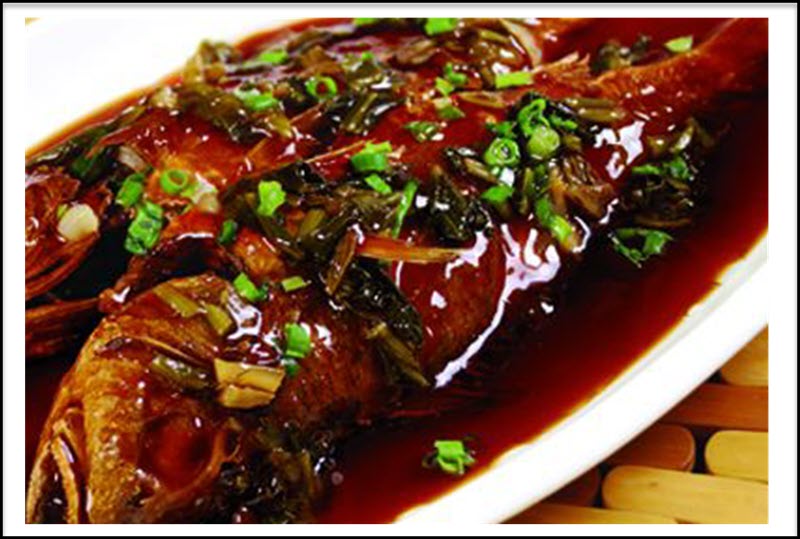
Zhejiang Cuisine
- Chinese name: zhè cài
- English name: Zhejiang cuisine, Zhe Cuisine, Zhejiang food
- Flavors: natural, sweet, milk and umami
Zhejiang Cuisines originates from Zhejian Province located in Eastern China. The province is called the land of milk and honey, and it is considered to be the richest province in China.
Zhejiang cuisine is mostly fish and seafood dishes, therefore if you not into spicy dishes then you should try Zhejiang dishes. Zhejiang dishes is generally described as non greasy, not too sour and not too sweet, not bland and not mouth numbing either. Characterized to be light and fresh.
With Zhejiang Cuisine, there are 3 different styles of cooking such as:
- Shaoxing- poultry and freshwater fish are mostly used
- Hangzou- rich foods and bamboo shoots are used for soups. Stir fry dishes are usually preferred.
- Ningbo- mostly used salty seafood
With Zhejiang Cuisine, seafood is the main ingredient with the dishes. There are may Chinese restaurants to get authentic Zhejiang Cuisines.
Most popular Zhejiang dishes are:
- Beggar’s Chicken (jiàohuā tóng jī)
- West Lake Fish in Vinegar Gravy (Xīhú cù yú)
- Fish Balls in Clear soup (qīngtāng yúyuán)
- Fried Cuttlefish Rolls (bào mòyú juǎn)
- Braised Croaker Soup (dà tāng huángyú)
- Dongo Pork
- Braised Bamboo Shoot
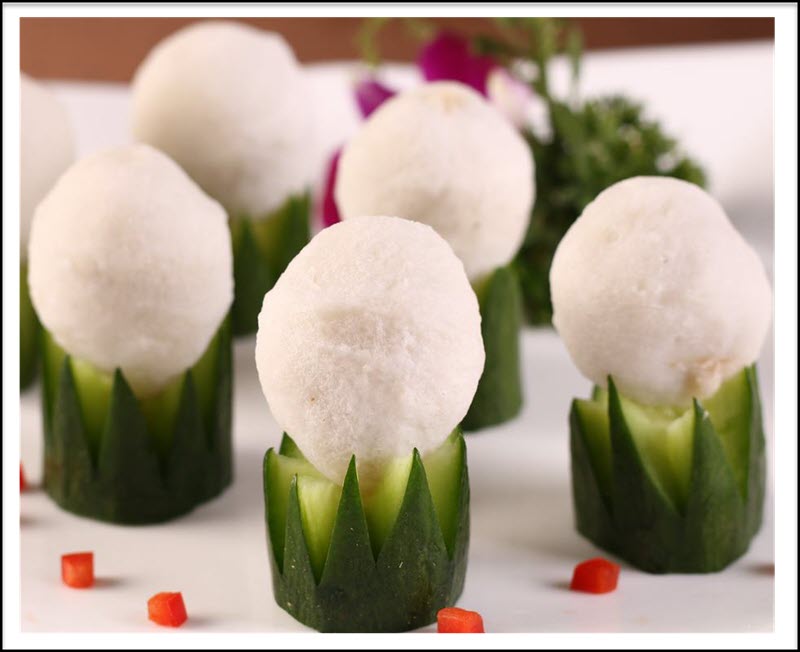
Fujian cuisine
- Chinese name: mǐn cài
- English name: Fujian cuisine, Min cuisine
- Flavors: fresh, sweet and sour
Fujian Cuisine is another cuisine that belongs to Chinese cuisine eight culinary tradition. The cuisine originates from Fujian Province. Since the province is in close coastal proximity, it uses seafoods as its main ingredient. The Province is now known because of the fresh seafood used and delicious soups that are seafood based such as shellfish, fish, bamboo shoots and woodland mushrooms.
Min Cuisine is popularly known for its light but flavorful, tender and soft dishes while at the same time preserving its original flavor of the main ingredients that are used in cooking.
There are three (3) different cooking styles in Min Cuisine:
- Fuzhou- compared with other Fujian styles, Fuzhou style is a mixture of sweet and sour taste.
- Western Fujian Style- it has a spicy taste that comes from the mustard and pepper used.
- Southern Fujian Style – the taste of this Fujian style is usually a mixture of sweet and spicy taste.
Fujian Cuisine is characterized based on these 4 remarkable features such as using ingredients that are out of the ordinary (exotic ingredients from the sea and the mountains such as wild herbs, bamboo, mushrooms), Soup (in Fujian, a meal without a soup is not a good meal), Seasonings (salty, sour, sweet, and hot) and decoration on how the food is presented.
Fujian Cuisine uses a wide variety of cooking methods such as baking, stewing, mixing, deep frying, pan frying, braising and salting. Sauteeing with wine, cooking in red wine as well as smoking and simmering.
The most popular Fujian dishes are:
- Red Glutinous Rice Wine Chicken
- Lychee Pork (Lizhi Rou)
- Hokkien Fried Rice
- Sacha Sauce
- Pepper Bun (Hújiāo bǐng)
- Ginger Duck
- Popiah
- Oyster Omelet
- Pepper Steak
- Fish Ball

Hunan Cuisine
- Chinese name: xiāng cài
- English name: Hunan cuisine, Xiang cuisine
- Flavors: hot and spicy, sour and spicy, salty and spicy, spicy
Hunan Cuisine is also known as Hunan Food or Xiang Cuisine. It is one of the 8 great culinary Chinese tradition. An origin from the Hunan Province (Changsha and Zhangjiajie) located in Southern Central region in China.
Hunan Cuisine is similar to Szechuan cuisine where it also has distinctive taste of spiciness. Dried chillies commonly used in Xiangf Cuisine that makes it spicy and also result to having dishes that are bright red in color. Other ingredients used are garlic, shallots and chili peppers. Although the only difference between Szechuan and Hunan is that with Szechuan you will definitely taste the hot and numbing of the dishes but with Hunan food it is just purely hot.
Hunan Cuisine is characterized with three flavors: Hot, Sour and Salty. The wet and hot summer as well as the chilly and wet winter is usually what makes people eat sour and hot foods. The extra heat from hot foods stabilizes the coldness of the weather.
Remarkable Features with Xiang Cuisine includes use of Hot seasonings (such as hot peppers, green onions, garlic, shallots, ginger, spicy oil, cinnamon and Duo La Jiao), Vegetables (such as Slapped cucumber (Pai Huanggua) and Rice (staple food in Xiang Cuisine)
Cooking Methods used in Xiang Cuisine includes boiling soups and stews, baking, braising, smoking, fermenting (store meat and vegetables for winter or hot season), and sautéing.
The most popular Xiang dishes are:
- Steamed Fish head (with chopped chili)
- Chairman Mao’s Red Braised pork
- Fried pork with Chili
- Hunan Rice Noodles
- Changsha Stinky Tofu
- Dong-an Chicken
- Spicy Salted Duck
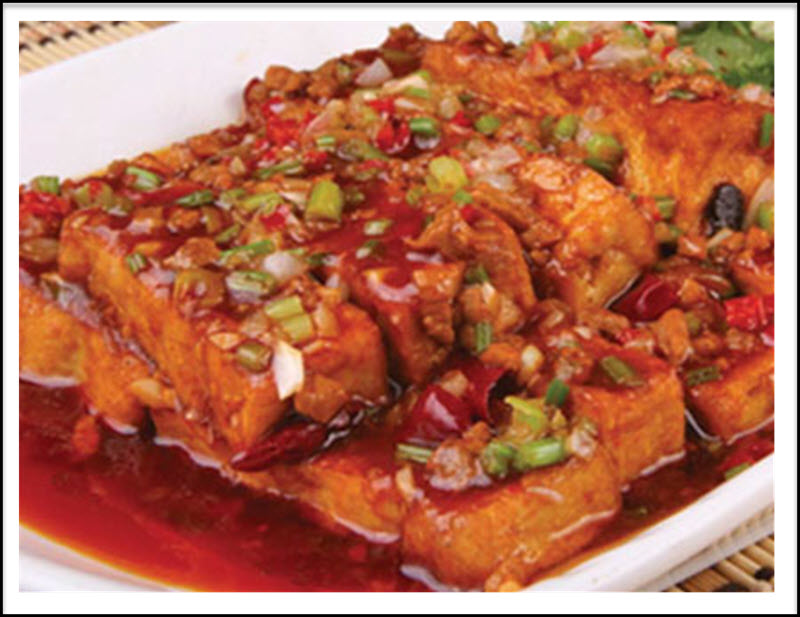
Anhui Cuisine (HUĪ CÀI)
- Chinese name: huī cài
- English name: Anhui cuisine, Hui cuisine, Huizhou cuisine
- Flavors: salty, flavors of wild ingredients used, fresh
Anhui cuisine or Hui Cuisine originates from Anhui province located in West of Shanghai China. Though the cuisine is not as popular as the other great cuisines since the province is considered to be the poorest inland.
Since Anhui cuisine is mostly incorporated using ingredients from the local mountains, it is considered to be a healthy cuisine. It has a lighter flavor in contrast to other types of Chinese cuisines
The ingredients that are typically used with Hui Cuisine includes wild foods such as wild caught frogs, small shrimps and turtles too and Fungi (these are cultivated fungi and mushrooms), herbs and vegetables (bamboo shoots and tea leaves-most common), rice and wheat (staple food in Hui Cuisine). In Hui Cuisine, meat dishes are typically pork and ham that are commonly used for making dishes such as Li Hongzhang stew ( a delicious stew made from using different varieties of ingredients; typically contains chicken, and ham) and Farmhouse egg dumplings (pork filled dumplings using egg wrapper).
The common Chinese cooking technique in Hui cuisines is Steaming and Braising.
The most popular Anhui dishes are:
- Huizhou Tagup
- Crab shell pancakes or Crab Shell Yellow
- Qingming Guo
- Bean Candy
- Stone Pancakes
- Huizhou Wontons
- Hui style Braised pork
- Hairy Tofu
- Pickled Mandarin Fish
- Steamed pork with lotus leaves
- Wenzheng Mountain Bamboo shoots
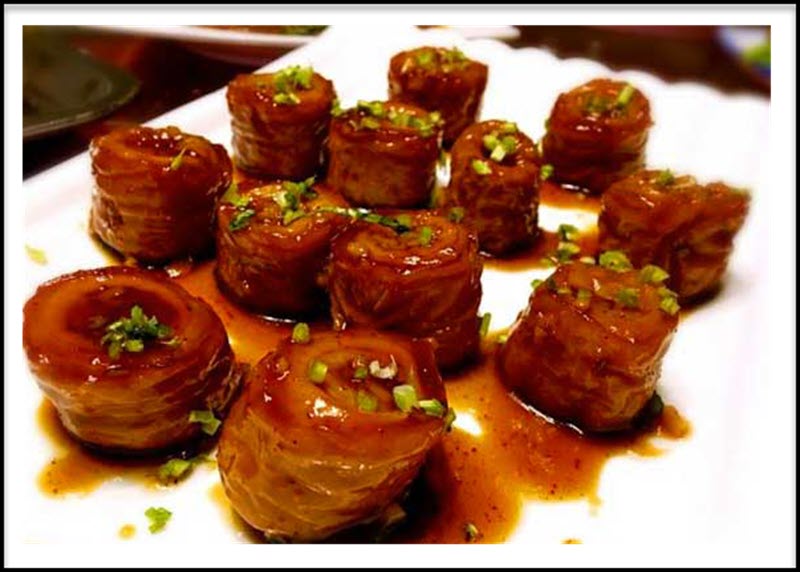
Shandong Cuisine
Shandong Cuisine originates from Shandong Province, a coastal area in Northern China. It is also called Shandong food or Lu Cuisine.
There are two styles with Shandong cuisine: Jiaodong (light seafood dish) and Jinan (soup is used in the dishes).
Notable Features of Lu Cuisines includes Salty, fishy, tender, light and crispy. With Shandong Cuisine, different varieties of seafood are used, but Shandong people also like to eat meat such as pork.
With Shandong cuisine, spices such as green onions and garlic is usually used. In fact, most of the dishes in Shandong cuisines includes onions. Although ginger is also used together with red peppers. Compared to Szechuan cuisine, it is less spicy. The use of vinegar and salt is also used deliberately as well as using soy sauce in most of the dishes.
Cooking methods in Shandong cuisine includes braising, stir frying (Bao), Fried dough coating (Pa) and making soup using clear broth.
The most popular Shandong dishes are:
- cuttlefish roe soup
- Diced pork in pot
- Dezhou Braised Chicken
- Steamed stuffed tofu
- Braised prawns
- Braised sea cucumber
- Sweet and sour Carp
Conclusion
There are 8 Great Chinese cuisines. The features of each of the eight cuisines of China are summarized as: Sichuan and Hunan Cuisine: Hot and spicy. Shandong cuisine as salty and fresh (lots of seafood dishes), Guandong cuisine Zhejiang cuisine and Jiangsu cuisines have a light and sweet flavor and we also have the Anhui cuisine and Xiang Cuisine that generally includes wild foods.
The eight culinary tradition of Chinese cuisines mentioned are not only recognized in China but is widely recognized and acknowledged in Chinese restaurants everywhere.